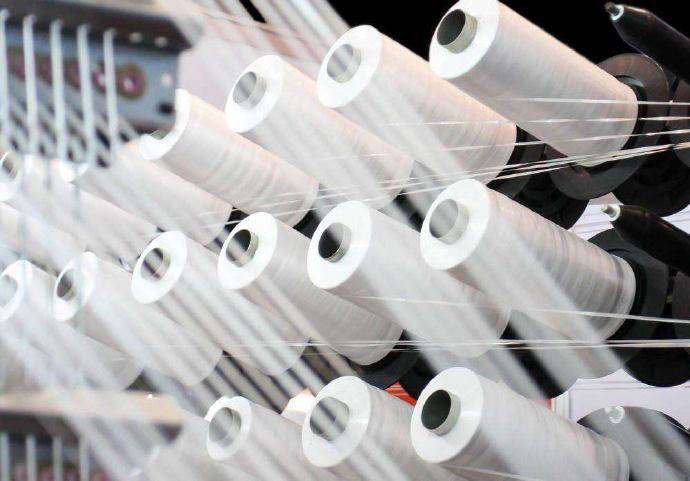 +86 152 6060 5085
+86 152 6060 5085
 +86 152 6060 5085
+86 152 6060 5085
Blog
Catalog
Products that can be labeled as "eco-textiles" are the products with the highest safety level among textiles.The concept of eco-textiles is mainly derived from the "oeko-tex STANDARD 100" issued by the international association for eco-textiles research and inspection in 1991, which emphasizes waste disposal after use.Processing in the production process;The product is harmless to users.At present, the most influential eco-textile certification in the world is "oeko-tex" of the international eco-textile research and inspection association and "eco-label" of the European Union.China also promulgated the national standard GB/T 18885-2002 "technical requirements for ecological textiles" on November 22, 2002.We believe that the textiles that meet these requirements can bring you peace of mind and comfort.
In January 2018, the environmental textile council released a new version of the oeko-texard 100 eco-textile testing standards and limited value requirements.After a three-month transition period, the new standards will take effect on April 1, 2018.The new standards refer to the existing laws and regulations, and further strengthen the supervision of harmful chemical residues in textiles by examining more substances and strictly controlling the limit value.
UTS environmental test solutions are carried out via programmable temperature and humidity chamber, therm shock tester, salt spray tester, walk in constant temperature and humidity chamber, etc.(If you are interested in Environmental Testing Equipment,contact now!)
Ecological textile testing project
PH value, formaldehyde content, extractable heavy metals, pesticides, chlorophenols, plasticizers, organotin compounds, dyes (dyes that can be decomposed into carcinogenic aromatic amines, carcinogens, allergens), organochlorine dyeing carriers, antibacterial finishing, flame retardant finishing, flame retardant, color fastness, volatile substances, odor, etc
GB/T 18885-2002 all test items required by regulations:
I. pH value:
The ph of human skin ranges from 4.5 to 6.0, and mild acidity protects the skin against bacteria and viruses.As people get older, their skin becomes more neutral and less antibacterial.Textiles that are neutral or slightly acidic are beneficial to the human body.If the ph of the textile is too high or too low, the skin surface is easily damaged.
Ii. Formaldehyde:
Formaldehyde gives textiles such functions as shrinkage - proof, anti - wrinkle, free from ironing.This volatile material is easily released from the fabric, which is harmful to human health, especially the irritation of respiratory mucosa.
Iii. Extractable heavy metals:
Antimony (Sb), arsenic (As), lead (Pb), cadmium (Cd), total chromium (Cr), cobalt (Co), copper (Cu), nickel (Ni), mercury (Hg), hexavalent chromium (Cr VI)
Plants absorb heavy metals in soil during planting, and heavy metals are found in textile post-processing and various dyes.When heavy metals enter the body, they accumulate in the organs, and once they reach a certain level, they can have a serious impact on our health.We simulated human sweat and extracted these heavy metals to detect the content of heavy metals in textiles.
Iv. Azo/allergenic/carcinogenic dyes:
The safety of dyes in clothing fabrics in contact with skin for a long time is undoubtedly very important.Azo dye is a common kind of dye, widely used in textile and leather industry.But a part of the dye is thought to be able to be reduced to aromatic amine substances harmful to human health.Some dyes, which are highly dispersed in water, have very small molecules that may be absorbed in prolonged contact with the skin.Some of the dyes are thought to be allergenic and carcinogenic.
V. Phthalates:
Phthalates are commonly used as plasticizers and are added to plastics and coatings to enhance their properties.Recent studies have shown that certain phthalates can have adverse effects on children's development, so there are strict restrictions on toys that babies can import.
Vi. Organic tin:
Organotin has antibacterial, mildew and other biological killing effect, is used in shoe materials, gloves, child care products and other products.High concentrations of organic tin are neurotoxic when absorbed through the skin.
Vii. Color fastness:
Color fastness is the basic requirement for product performance, which directly reflects product quality.Dye shedding not only affects the appearance of garments, but is more likely to be absorbed through the skin.Four color fastness indicators were selected from the ecological textile standard, which were water stains, sweat stains (acidic/alkaline), resistance to rubbing (dry/wet) and saliva (especially for infants).Colour fastness to saliva and sweat stains in baby clothes is particularly important because dye can be absorbed through saliva and sweat stains.

Email: hello@utstesters.com
Direct: + 86 152 6060 5085
Tel: +86-596-7686689
Web: www.utstesters.com